Mariton: Migratory Bird Census
by Tim Burris, Preserve Manager. Photos by Carole Mebus.
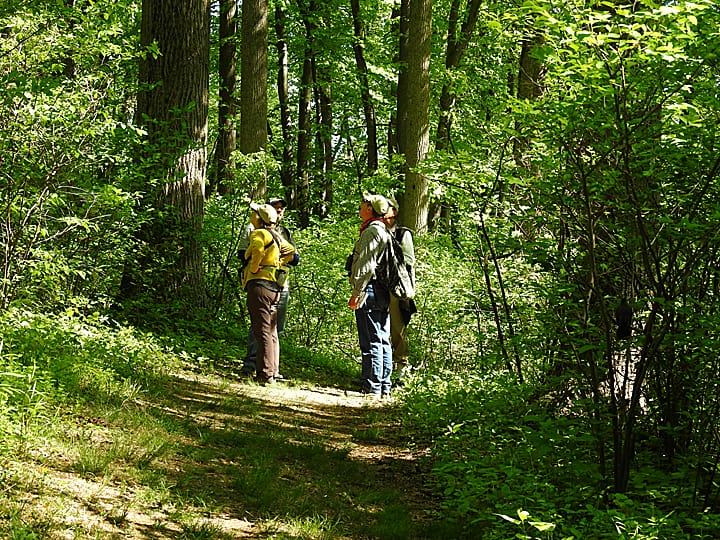
The expert birders use both their eyes and ears to count birds.
Mariton conducted its 29th Migratory Bird Census this past Saturday. We tallied 49 species and 236 individuals. For me it is an exciting count. Many bird species only spend a week or two in our area as they move farther north, so it is a scavenger hunt of sorts. The weather was great, and besides the wonderful birds, the wildflowers were gorgeous too.
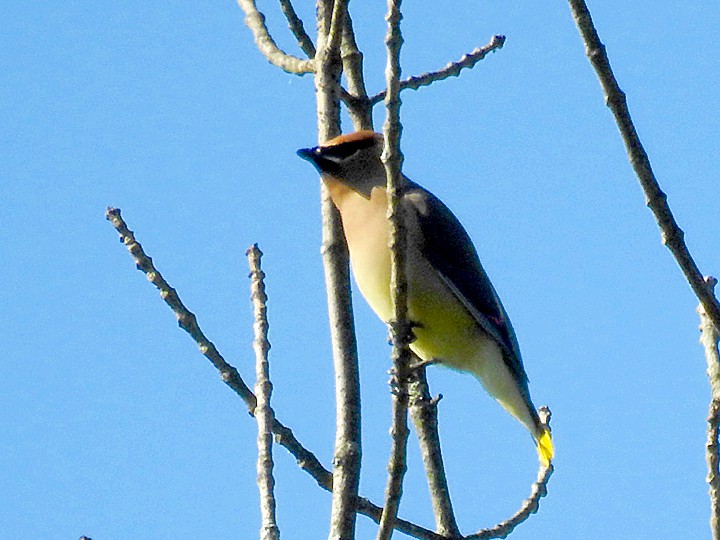
A beautiful Cedar Waxwing.
Early in the census we had a small flock of Cedar Waxwings that frequented trees with small leaves. That made it much easier to see them.
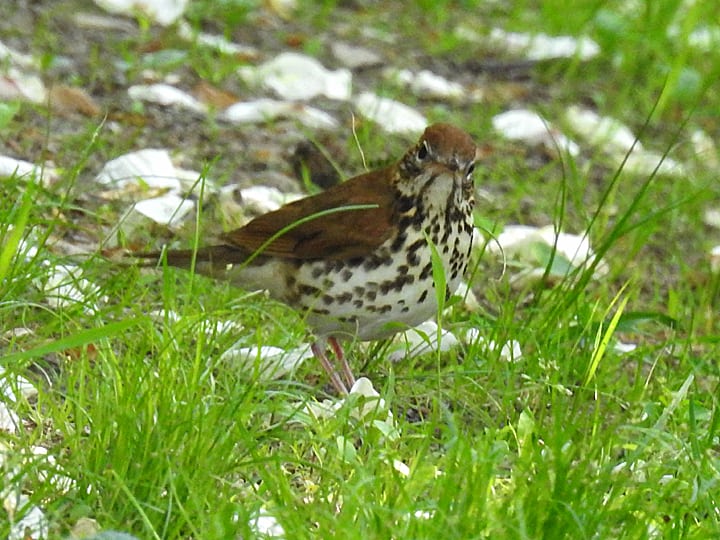
The Wood Thrush is a beautiful singer.
The Wood Thrush has one of the most beautiful bird songs. They need large patches of unbroken forest to successfully nest and continue. The security of their ideal habitat was in doubt during my own lifetime. A lot of organizations like Natural Lands, and government bureaus set to protecting large forested areas from being broken up, and it has helped several other species. Mariton has long provided great habitat for Wood Thrushes. No surprise, it is usually the most abundant species on this census. We counted 21 Wood Thrushes on Saturday. Over the years, we have counted as many as 30 on this census, and the average is 17.
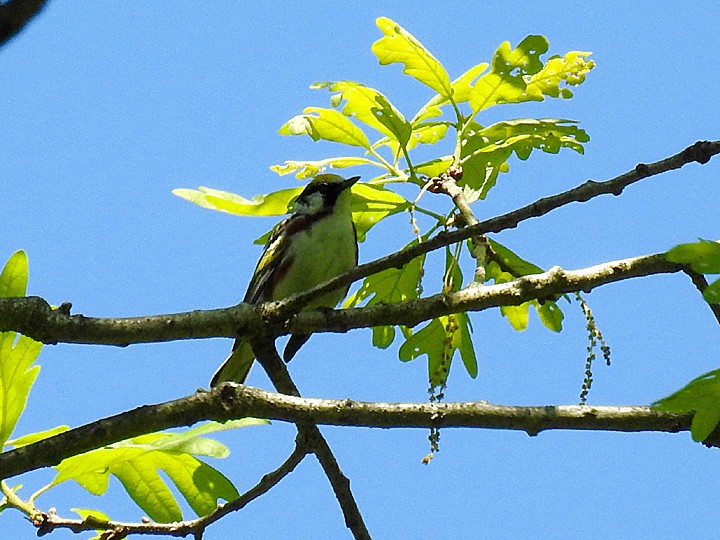
Chestnut-sided Warbler.
We were thrilled to get good looks at two Chestnut-sided Warblers. They are beautiful birds with a unique song. They like brushier habitat, and Hurricane Sandy opened up sections of Mariton’s forest to make a forest habitat ideal for early successional species like Chestnut-sided Warblers. It is still forest, just at a different stage of development.
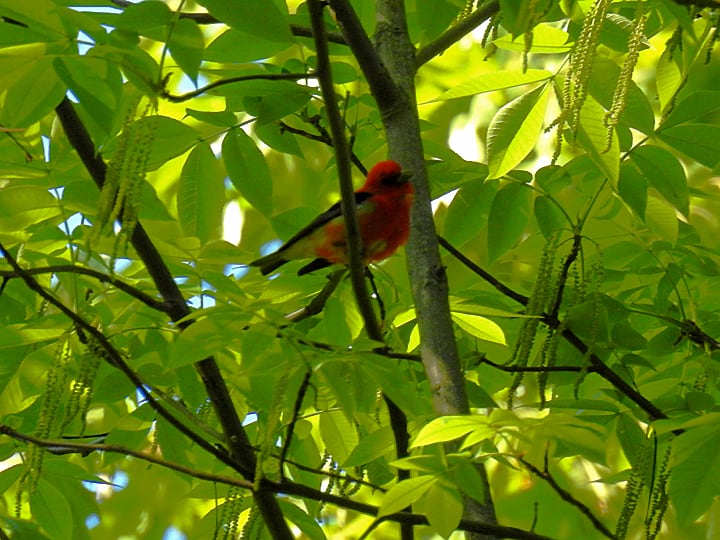
Scarlet Tanager
The amount of yellow on this male Scarlet Tanager reveals that it is still getting its mature breeding plumage. As Jim mused, it could have hatched in these woods last year, then traveled to Colombia for the winter, and then traveled all the way back to this forest on its own. What an odyssey! In a few weeks, we will conduct our Nesting Bird Census. Several of the species we counted this weekend will have moved on, but there will be many birds that will spend the summer here with the sole purpose of raising another generation. Like the Scarlet Tanager, when they leave the relative safety of Mariton Wildlife Sanctuary, they have several dangerous months of migrations and winter refuge to survive so they can grace our forests again next spring. Twelve-month habitat protection is key for all of these migrating birds.
